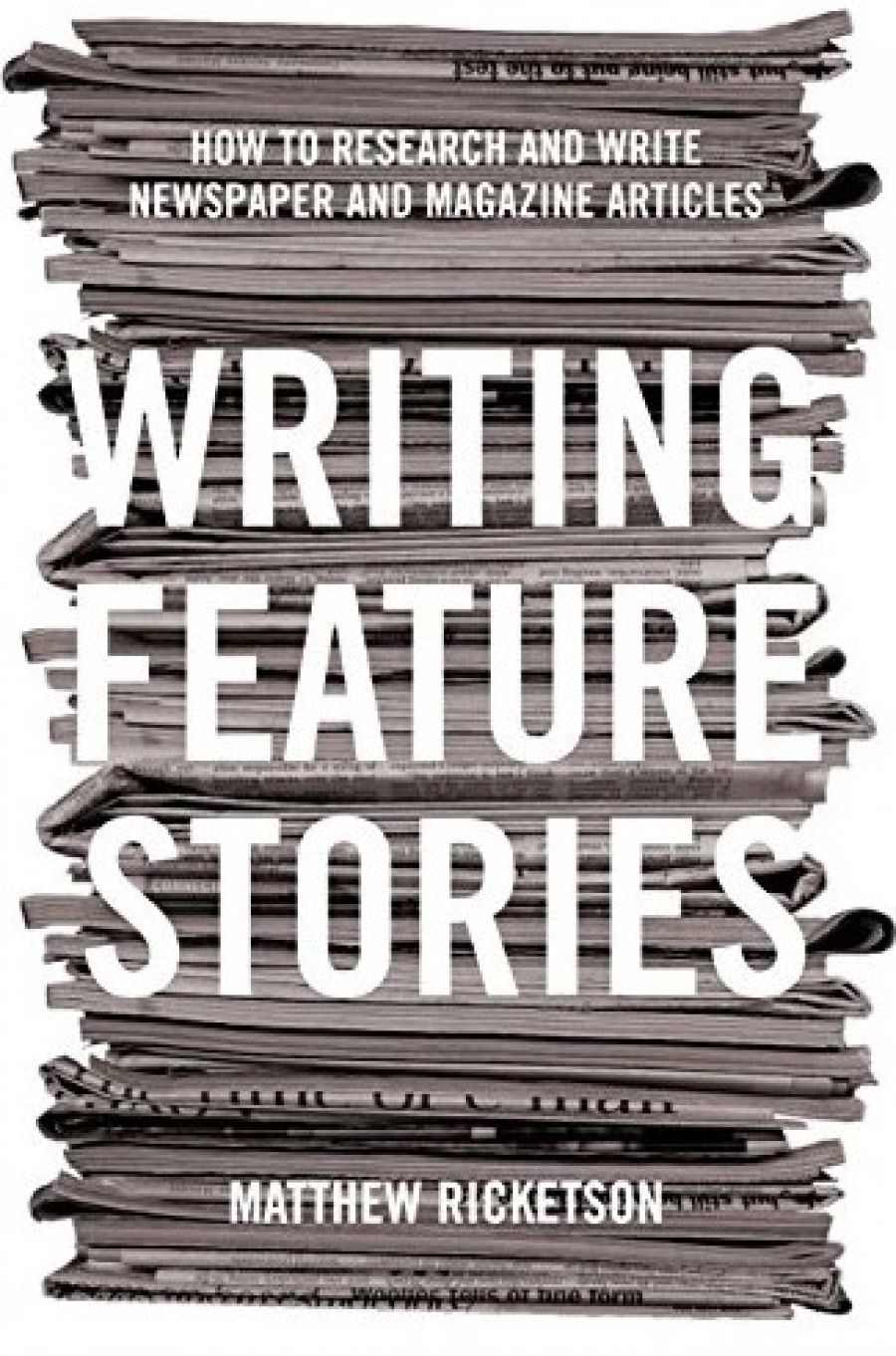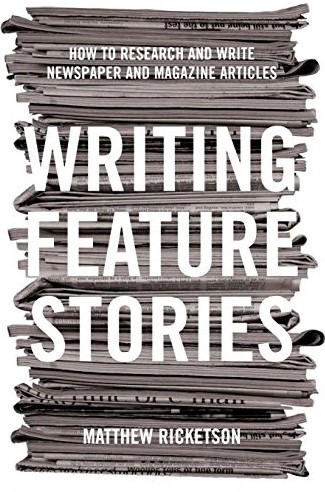
- Free Article: No
- Contents Category: Journalism
- Review Article: Yes
- Article Title: Employed at Last!
- Online Only: No
- Custom Highlight Text:
All too often, so-called manuals for screenwriters, novelists and poets begin by letting the reader know how unlikely it is that they will ever get published, let alone make a living. Fortunately, journalist and RMIT journalism lecturer Matthew Ricketson avoids this private-club view of the journalism profession. He points out that there are about 370 newspapers, ranging from dailies and suburban weeklies to regional and multicultural newspapers. There are also more than 3000 magazines in the Australian market.
- Book 1 Title: Writing Feature Stories
- Book 1 Subtitle: How to research and write newspaper and magazine articles
- Book 1 Biblio: Allen & Unwin, $35 pb, 284 pp
- Book 1 Cover Small (400 x 600):

- Book 1 Cover (800 x 1200):

Mr Gow, my Year 11 journalism teacher at Cass Technical High School in Detroit, taught me the distinctions between the inverted pyramid style of reporting and the feature. In the former, a copy editor should be able to chop it off at any point from the bottom up without the article losing anything but detail. A good feature story should ‘Grab ’em with the opener, hold ’em with the body of the text, and zing ’em with the close’.
Writing Feature Stories teaches through example. The text is liberally strewn with anecdotal examples of the good, the bad and the occasionally ugly in feature writing, and includes eight full-length feature articles – available for dissection by the reader. All of the major examples arc drawn from Australian contemporary feature writing, but valuable references are made to some of the iconic overseas practitioners, such as Westbrook Pegler and Red Smith. A brilliant excerpt from a scarifyingly effective Village Voice story on bodybuilding by Paul Solataroff reminds me why I never pumped iron: ‘Half the world was in mortal terror of him. He had a sixty-inch chest, twenty-three-inch arms, and when the Anadrol and Bolasterone backed up in his bloodstream, his eyes went red as the laser scope on an Uzi.’
The pathos generated in stories such as those by Garry Linnell (‘Hope Lives Here’) about children with life-threatening illnesses at the Royal Children’s Hospital, and by Pamela Bone (‘This Man Raped Two Little Children’) is accompanied by explanations by the writers on their rationale for writing these stories, their relationship with the editor, deadlines, research techniques and their approach to the subject matter.
Ricketson’s reportage of how Andrew Rule’s investigative feature in The Age and The Sydney Morning Herald (about accusations against suspended ATSIC Chair Geoff Clark) might have been less controversial if published in the form originally intended (with an accompanying news article) provides a revealing insight into how newspapers work or, in this instance, don’t work, and makes for fascinating reading.
With the zeal of a true believer, Ricketson bring an enthusiasm for the craft, promoting both its importance and the enjoyment for the journalist, but also correctly reminding the reader that it is also hard work, requiring high levels of craftsmanship and artistry, a constant eye on the clock and an understanding of the readership. Structurally, the text analyses the different styles of feature article, research techniques and includes exercises at the end of each chapter.
Ricketson points to instances where even the high and mighty do not reach an acceptable standard. Referring to columnists who are so-called pundits, the author comments on an:
arrogance [that] extends to their disdain for research, let alone getting out of the office to do any on-the-ground reporting work. P.P. McGuinness, the editor of Quadrant, has written columns for many newspapers for many years. He presents himself as a gadfly, fearlessly challenging received wisdom, but under pressure of time and the need to fill space, this has become a pose, a contrived contrariness. As issues arise in the news, McGuinnes punches out formulaic opinions.
Ricketson includes his own 2900-word profile of children’s book author Robin Klein, who had suffered a major stroke (‘The Fleeting Memory’). Self-critical, as any self-respecting journo should be, Ricketson also presents the original 4000-word version with an explanation of what was cut and why.
Successfully accomplishing its mission as a textbook for aspiring and existing feature writers, Writing Feature Stories – lucid and accessible – will reach a broad audience. I commend it to anyone wishing to understand the processes a good feature writer engages in to prepare material, or for those just wanting to read a good bodybuilder yam.


Comments powered by CComment